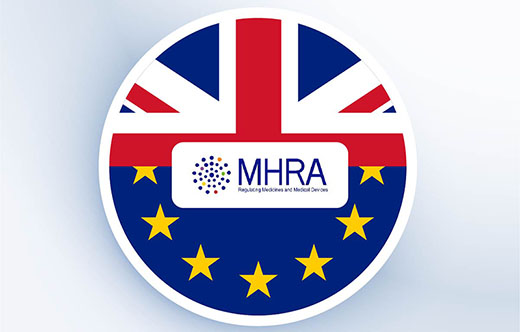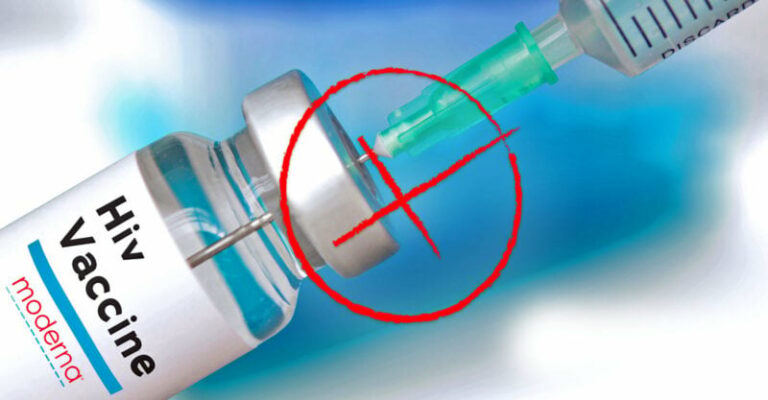Raising concerns about the MHRA’: something appears to be breaking in the U.K.
This ferocious and sustained attack on the MHRA which has just been published by the All Party Parliamentary Group on Pandemic Response and Recovery was sent on 24 October last year to the Chair of the Health and Social Care Committee. An APPG is an informal group of parliamentarians from both the Commons and the Lords: the Health and Social Care Committee is a standing body which formally scrutinises the performance of the Department of Health and Social Care – and the implication is that it has ignored the letter. What is astonishing about this letter apart from the forthright content is the list of 25 signatories including as well as the usual Conservatives Labour members, Scottish National Party, Ulster Unionists, notably Esther McVey who is now a Cabinet minister, plus three non parliamentarians including Prof Carl Heneghan. Oddly, Andrew Bridgen isn’t there, but presumably all the signatories have agreed to publication and are now desperate to get this matter raised in a way which cannot be ignored ahead of a General Election.
https://appgpandemic.org/news/mhra-letter-health-select-committee
The letter:
9 February 2024
Steve Brine MP
Health and Social Care Committee,
House of Commons,
London, SW1A 0AA
Letter by email
SENT: 24 October 2023
Dear Steve,
We write regarding serious concerns about the approach of the Medicines and Healthcare Products Regulatory Agency (MHRA) to patient safety and also problems in a system that, far from protecting patients, continues to put them at serious risk.
The most recent examination of patient safety failings, the Independent Medicines and Medical Devices Safety Review (IMMDS), in its thorough investigation of Primodos, sodium valproate and pelvic mesh, brought a number of these concerns to the fore. Within the scope of what it was asked to examine, it found the response of the healthcare system was not sufficiently robust, speedy or appropriate, causing patients to suffer, in some cases, life-changing or fatal, avoidable harm.
On July 17, the meeting of the All Party Parliamentary Group on Pandemic Response and Recovery, heard evidence from Professor Carl Heneghan, who published a 2018 meta-analysis of oral hormone pregnancy tests and provided the IMMDS review with written and oral evidence. We also heard from solicitor Peter Todd, who is acting for 74 individuals who have suffered thrombosis or thrombocytopenia after Covid-19 vaccination.
The evidence leads us to believe that serious patient safety concerns persist beyond even the findings of the IMMDS review. We also believe that the MHRA is at the heart of these far wider endemic failings, and that those cited in this letter merely represent the tip of a sizeable iceberg of failure.
Two aspects of the system which were of particular concern emerged:
The Yellow Card Scheme
The Yellow Card Scheme, for reporting suspected adverse drug reactions (ADRs) and created to act as an early warning system is failing patients. The reporting of suspected ADRs by the public is a valuable source of information about the possible harms of pharmaceuticals. Research has shown that a significant number of hospital admissions are caused or complicated by ADRs (16.5%), while analysis of inpatient stays has shown that 15% of patients experience one or more ADRs, with half being either definitely or possibly avoidable.
The IMMDS Review wrote in their report First Do No Harm:
1.20 We heard about a system that cannot be relied upon to identify promptly significant adverse outcomes arising from a medication or device because it lacks the means to do so. For decades there has been something known as the ‘Yellow Card’ system through which clinicians, and indeed patients, can report suspected adverse reactions to treatment. However it is clear that there is gross under-reporting, and our complaints systems are both too complex and too diffuse to allow early signal detection.
Under-reporting hinders the ability to detect signals and assign causation. The cost to patient safety of such an unreliable system can be measured in the needless fatalities, the considerable burden on the quality of life for survivors and a £2.2 billion strain on NHS England alone.
In the UK, patients have been involved in safety reporting since 2005, but only one in 12 patients are aware that they can report a suspected ADR. A 2006 systematic review of 27 studies found that the rate of under-reporting of adverse events was, on average, 94% and possibly as high as 98%, meaning possibly only two in every 100 ADRs were reported to the MHRA. For example, a survey of UK pharmacists suggested they lack interest in, and do not promote, direct patient reporting. Only 19% of the respondents displayed a poster promoting the Yellow Card Scheme in their pharmacy. In 2018, the MHRA “estimated that only 10% of serious reactions and between 2% and 4% of non-serious reactions are reported.”
While these data are historical, there is no evidence that even since First Do No Harm was published, the situation has improved. On the contrary, evidence points to a worsening situation, as this 2023 analysis of anticoagulants shows. It compared Yellow Card reports to hospital reporting of gastrointestinal bleeds over five years and suggests underreporting is still a significant concern. The North West of England Hospital Trust recorded 12,013 bleed-related emergency admissions. Of these, 1,058 were taking DOAC anticoagulants. However, only six DOAC Yellow Card reports (0.56% of the possible) were made by the Trust during the period.
The need to overhaul the YCS was something Sling the Mesh highlighted in its 16 December 2022 correspondence to your Committee on the IMMDS Review after the follow-up one-off session. Point 9 asks, “Why is the MHRA refusing to make it mandatory for doctors to log complications to the Yellow Card system? An overhaul of the way adverse events are logged is a key component of Recommendation 6. So far, all the MHRA has done is a “look and feel redesign” of the Yellow Card brand. The real issue at hand is mandating logging by doctors. It is currently only mandatory for the industry to report adverse events-but industry will have no idea as they are not at the coalface seeing patients, like GPs and consultants are”.
The IMMDS review is clear, and we agree: 1.43 “The spontaneous reporting platform for medicines and devices, the Yellow Card system, needs reform. It needs to provide a user-friendly, accessible, transparent repository of adverse event reports”.
Conflicts of Interest and Transparency
The MHRA’s admission in What we will do differently, published in 2020 that “there is a perceived lack of transparency about how the agency makes its decisions and the information that it currently provides”, implies the existence of conflicts of interest. Often the two, conflicts of interest and a lack of transparency, go hand in hand.
The 2004-5 House of Commons Health committee report The Influence of the Pharmaceutical Industry found “The MHRA was unusual in being one of few European agencies where the operation of the medicines regulatory system was funded entirely by fees derived from services to industry (drug regulatory agencies in other countries are more often only partly funded by licence fees). The MHRA’s activities are 60% funded through licensing fees paid by those seeking marketing approvals and 40% through an annual service fee, also paid by the industry” and that it “failed to adequately scrutinise licensing data and its post-marketing surveillance is inadequate.”
The MHRA continues to be primarily funded by income from fees for sales of products and regulatory services: the breakdown sees 50% fees for services, 25% industry periodic fees and 25% Department funding. The fact that in March 2022, Dame June Raine, Chief Executive of the MHRA, boasted of the agency’s transition from “the watchdog to the enabler” does little to quell suspicions of conflicts and the implications for patient safety and cannot be overlooked.
Lack of transparency, a similarly long-standing problem, and not surprising given the inherent symbiosis with conflicts of interest, can be demonstrated by the MHRA’s responses to Freedom of Information (FOI) requests.
Between 2008 and 2017, only 41% of requests were successful. Since 2019, the number of requests has seen a substantial increase from 609 to 1609 in 2021, likely due to concerns about the regulation of Covid-19 vaccinations, but so has the poor response, with 76% of these requests answered outside the 20 working days statutory response time. Often exemptions were applied or vague or evasive responses were received.
Transparency and conflicts of interest in the healthcare system were something the IMMDS review tackled in Recommendation 8: “The register of the General Medical Council (GMC) should be expanded to include a list of financial and non-pecuniary interests for all doctors, as well as doctors’ particular clinical interests and their recognised and accredited specialisms. In addition, there should be mandatory reporting for the pharmaceutical and medical device industries of payments made to teaching hospitals, research institutions and individual clinicians”. Sling the Mesh felt this should extend to all individuals and organisations involved in the system, healthcare professionals, teaching hospitals, researchers/academics and health charities. Our view is that a separate, dedicated register for conflicts of interest is what is required.
Neither a lack of transparency nor conflicts of interest promote the sort of environment needed to fulfil a statutory duty to protect patient safety or crucial for maintaining the public’s trust.
The Medicines and Healthcare products Regulatory Agency
The mission of the MHRA is “to protect and promote public health and patient safety, by ensuring that healthcare products meet appropriate standards of safety, quality and efficacy. We keep watch over medicines and devices, and take necessary action to protect the public promptly if there is a problem.” But from regulatory approval to post marketing pharmacovigilance the MHRA has a history of failing patients and in the words of recommendation 6 of the IMMDS “needs substantial revision particularly in relation to adverse event reporting and medical device regulation. It needs to ensure that it engages more with patients and their outcomes. It needs to raise awareness of its public protection roles and to ensure that patients have an integral role in its work.
We also fail to see how the spirit of the mission can be reconciled with Dr Raine’s view of her organisation as an enabler: enabler of what? The IMMDS review found that comprehensive pre-market testing, post-marketing surveillance and long-term monitoring of outcomes was “dangerous” (1.15) but what reforms of any substance have been carried out at the MHRA to make the necessary improvements?
For example, at the regulatory approval stage, does the MHRA set safety targets for licensing medicines? Post licensing, can the MHRA distinguish between suspected drug reactions and the underlying condition under treatment in determining signals of harm? The MHRA does not attempt to assess or compare the safety of different vaccines, due to inadequate reporting in the system which prevents any analysis: “It is not possible to compare the safety of different vaccines by comparing the numbers presented in the vaccine reports. Reporting rates can be influenced by many factors, including the seriousness of the adverse reactions, their ease of recognition and the extent of use of a particular vaccine. Reporting can also be stimulated by promotion and publicity about a product.”
Turning to FOI requests again, evidence from recent requests regarding the MHRA’s follow-up or investigation of yellow card reports shows it is failing the basic principles of good pharmacovigilance practice (GVP). Principles considered to be critical by the European Medicines Agency (EMA) guidance to which the MHRA seemingly still subscribes. Critical principles such as follow up for missing information and timely electronic transmission of yellow card reports from any source as well as collection, processing, management, quality control, coding and classification.
Yet, the MHRA “does not hold a process for the investigation and follow up of individual Yellow Card reports” (FOI 22/562), the retrieval of follow-up information from the ADR database still requires manual extraction (FOI 23/117) and by its own admission, the MHRA cannot and does not effectively monitor Yellow Card reports. We know from FOI 23/379 that the MHRA only followed up some 54% of deaths reported in yellow cards as possibly linked to exposure to one of the Covid-19 vaccines. SafetyConnect technology, implemented as part of the response to IMMDS review recommendations, according to an ICO decision notice “requires further enhancements before it can be used on a routine basis, therefore it has not been utilised for reports about covid-19 vaccines outside of the Yellow Card Vaccine Monitor (YCVM) programme so far. MHRA further explained that at this time there are limitations with the functionality for scheduling follow-ups meaning that it cannot be used routinely as it cannot be applied retrospectively to reports already received, only to newly submitted reports. Finally, the SafetyConnect technology only allows follow-up requests to be sent to registered users of the Yellow Card site”.
All of which became only too evident in the way the MHRA responded to reports of deaths following the AstraZeneca vaccine (AZ), when it was found to cause the autoimmune condition Vaccine-Induced Thrombotic Thrombocytopaenia (VITT). Denmark, and other European countries, suspended the vaccine immediately on 11 March 2021, pending further investigation and took the necessary action to protect the public promptly. By contrast, the MHRA said it could see no evidence of a link, despite a signal from Yellow Card reports as early as 7 February, only published safety advice on 7 April, by which time, 24 million people had been vaccinated in the UK without MHRA’s pharmacovigilance system detecting a problem. Two months later, 7 May, the MHRA withdrew AZ for under 40s, but only after further needless deaths, such as that of BBC radio reporter Lisa Shaw who received her first dose of the AZ vaccine on 29 April. Presumably this is what Dr Raine meant as “enabling”.
What statistical analysis of reports is done only assesses the relative safety of the medicines and not causation of the ADR. In fact, due to the methods used in its Disproportionality Analysis for both non-covid and covid vaccines the MHRA missed potential safety signals, as the findings of the Commission on Human Medicines Pharmacovigilance Expert Advisory Group report show.
These are the same Yellow Card reports which June Raine described as remaining the “most significant method of pharmacovigilance”. Given the under-reporting, complexity and diffuse nature of the YCS and new technology still limited by its functionality for scheduling follow-ups, which the EMA considers a critical principle of GVP at arguably the most crucial post-authorisation stage of the patient safety process, the MHRA will inevitably miss vital safety signals. Patient safety will remain compromised in the face of such a fundamental, wide reaching flaw in the monitoring.
The MHRA is also responsible for monitoring and enforcing the advertising of medicines, as set out in part 14 of the Human Medicines Regulations 2012, which are interpreted by the MHRA in its guidance document The Blue Guide. Government advertisements such as these in the Daily Mirror and Netmums at the very least breached the prohibition on the use of the word “safe”. Concerns raised directly with the MHRA have been met with an habitually dismissive and evasive response. Aside from adding to the considerable evidence of widespread endemic regulatory failings, this further reinforces the need for comprehensive scrutiny of all MHRA functions, since even with publications like What we will do differently or its proposed Patient and Public Involvement Strategy 2020-5, it prefers to tinker around the edges rather than pursue, voluntarily, the sort of urgent and drastic changes required.
Perhaps all of these concerns pale into comparison in the light of the House of Commons Session 2004-05 Health Committee Publication on Health – Fourth Report.
The report notes there had been no Select Committee investigation of the industry since the Select Committee report on patent medicines in 1914. “The regulatory system, the medical profession and Government have all failed to ensure that industry’s activities are more clearly allied to the interests of patients and the NHS.”
“The regulatory authority, which is responsible for controlling much of the behaviour of the industry has significant failings. Lack of transparency has played a major part in allowing failings to continue. The traditional secrecy in the drug regulatory process has insulated regulators from the feedback that would otherwise check, test and stimulate their policies and performance. Failure can be measured by the MHRA’s poor history in recognising drug risks, poor communication and lack of public trust. Regulatory secrecy also underpins publication bias, and other unacceptable practices. The closeness that has developed between regulators and companies has deprived the industry of rigorous quality control and audit.”
The report’s findings were prophetic in that they predicted the further unsafe use of drugs and the increasing medicalisation of society. Furthermore, the recommendations of this report set out the need to focus more intensely on updating drug benefit/risk profiles in the Summary of Product Characteristics, following systematic post-marketing review.
Conclusion
One of the underlying objectives of the IMMDS review’s recommendations was to ensure that action is taken to improve the healthcare system’s approach to patient safety and thus minimise the risk of a repeat of such tragedies in future.
After years, and in some cases two decades, little progress of the type needed seems to have been made, least of all where the MHRA is concerned. In the meantime, we have announcements such as the 2021 UK Life Sciences Vision and, more recently, that the MHRA is increasingly seeking to bring medicines to market quicker with less pre-approval data and more post-approval research being conducted. All are being overseen by a regulator still heavily funded by the industry for whose products it gives regulatory approval and carries out post-marketing pharmacovigilance, which still lacks transparency, is failing adequately to scrutinise licensing data, inadequate post-marketing surveillance and persistent widespread problems with the reporting and detection of ADRs and device reactions.
What conclusions are we to draw about the seeming unwillingness of a regulator, largely funded by those it regulates, to disclose data to the same public it professes to protect? It raises the serious question: is this a regulator primarily concerned with patient safety, keeping watch over medicines and devices and taking the necessary action to protect the public promptly if there is a problem? We feel compelled to conclude that the MHRA has indeed become an enabler for the pharmaceutical industry, with patient safety no longer being its primary concern.
Only a select committee can investigate such issues and make recommendations to the government which we believe must among others, encompass legislative changes as to who is obligated to report ADRs, funding changes to the MHRA, separation of regulatory approval duties from post marketing pharmacovigilance, more inclusion of patients to improve the current system, greater transparency across the board and proper enforcement of Part 14 of the Human Medicines Regulations 2012 .
Accumulating evidence and the IMMDS review showed the MHRA’s approach to patient safety requires a radical overhaul. In the words of Baroness Cumberlege in her correspondence of 15 December 2022 to the Committee “your scrutiny is vital in holding the system to account”. We urge the Health and Social Care Select Committee to launch a thorough, wide ranging and long overdue investigation into the MHRA, which has overseen and continues to oversee these issues, in a system beset by conflicts, and is often too late in detecting and acting to prevent serious harms. The human cost to the patients and the financial burden on the healthcare system is substantial and failure to act will only lead to more harm and further damage to the public’s trust.
Yours,
APPG on Pandemic Response and Recovery Co-chairs:
Rt Hon Esther McVey MP
Graham Stringer MP
Other signatories:
Philip Davies MP
Sammy Wilson MP
Lord Strathcarron
Baroness Foster of Oxton
Thomas Coke, the Earl of Leicester
Sir Graham Brady MP
Sir Christopher Chope MP
Jim Shannon MP
Allan Dorans MP
Simon Fell MP
Danny Kruger MP
James Grundy MP
Yvonne Fovargue MP
George Howarth MP
Chris Clarkson MP
Hannah Bardell MP
Damien Moore MP
Nick Fletcher MP
Lord Alton of Liverpool
Philip Hollobone MP
William Wragg MP
Alec Shelbrooke MP
Miriam Cates MP
Chair of ACDHPT and Secretariat for the APPG on Hormone Pregnancy Tests (Primodos) – Marie Lyon
Founder of Sling the Mesh and Secretariat for the APPG on Surgical Mesh – Kath Sansom
Professor of Evidence-Based Medicine at the University of Oxford, Director of the Centre for Evidence Based Medicine and an NHS General Practitioner working in urgent care – Professor Carl Heneghan
Originally published appgpandemic
Suggest a correction






